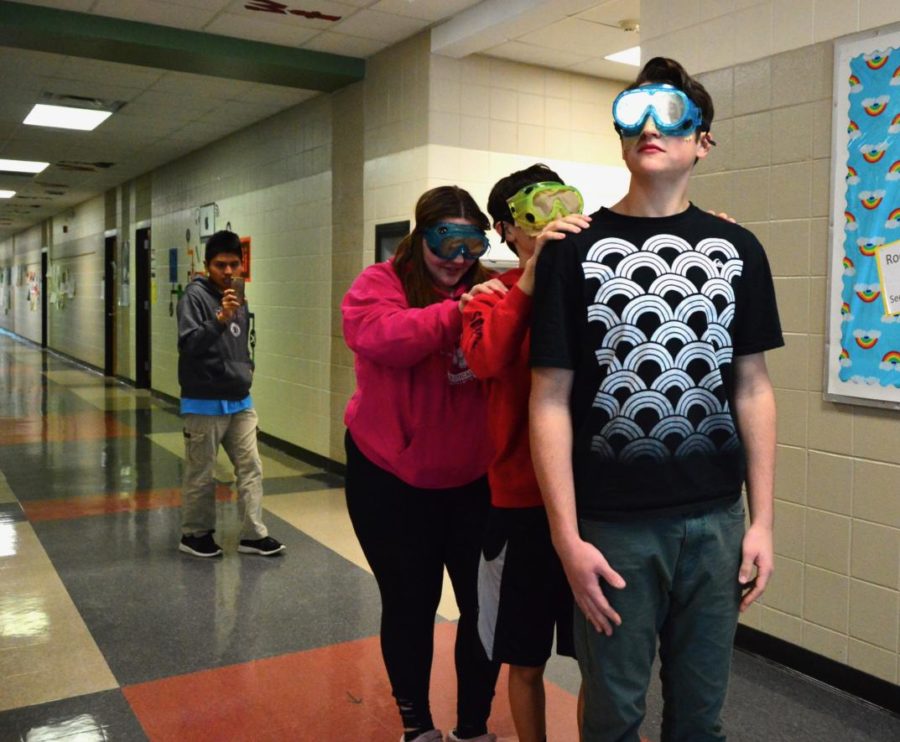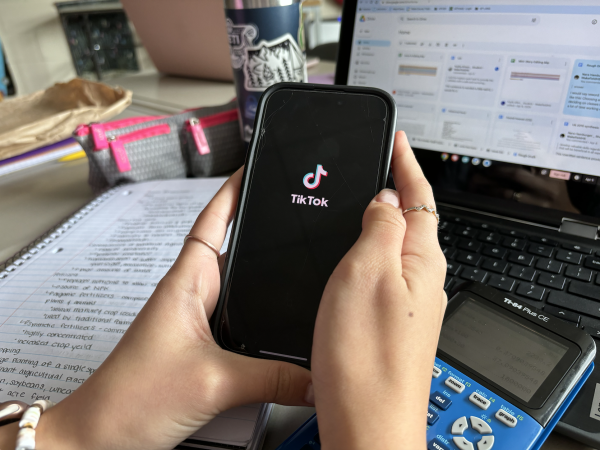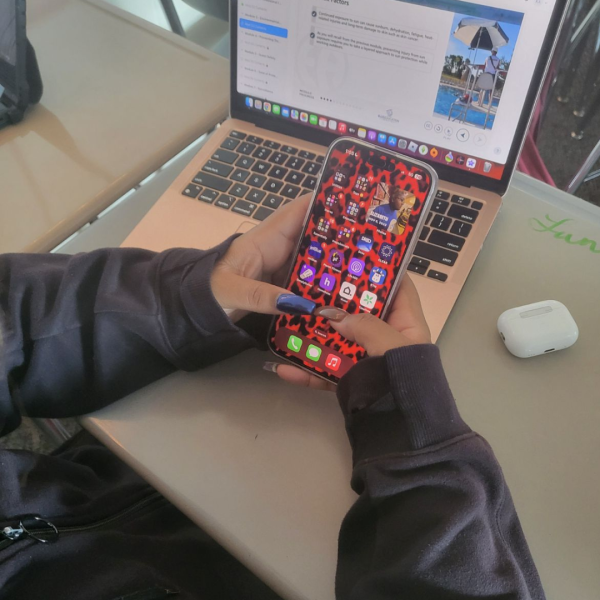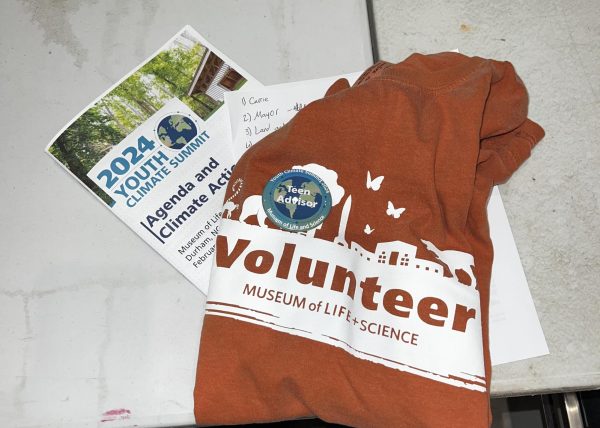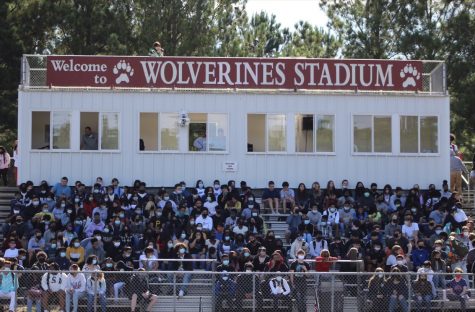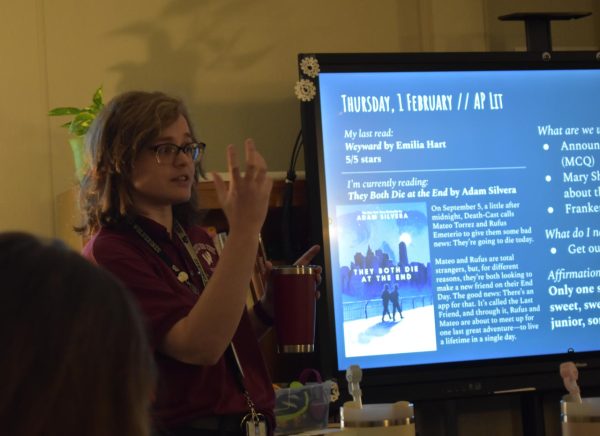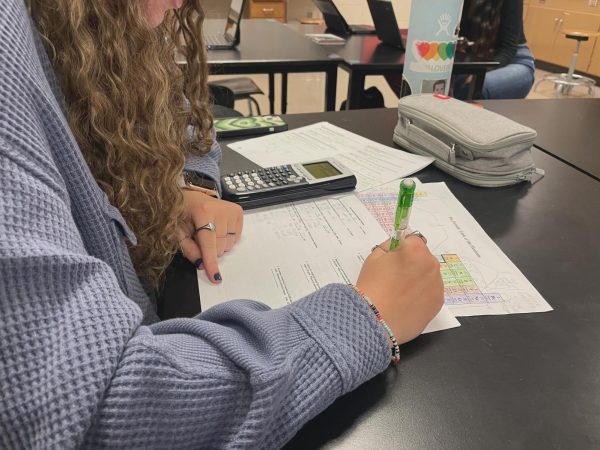Crew Dragon docks to the ISS autonomously: a flight to be remembered
Staff Photo by Ashley Masingale
Students build awareness of the importance of space technology by re-enacting a Mars rover.
The Demonstration-1 mission made history this past Sunday when the SpaceX Crew Dragon vehicle docked itself to the International Space Station autonomously — an unprecedented triumph of any U.S. spacecraft, NASA says.
Cargo flights to the ISS have been berthed in the past, meaning a robotic arm pulls in oncoming vehicles. Crew Dragon, however, attached to the ISS completely automatically.
SpaceX renovated their original Dragon cargo capsule, which has been delivering supplies to the ISS since 2012, to accommodate human passengers. Atop the Falcon 9 rocket, the new Crew Dragon launched on Saturday from Kennedy Space Center in Florida and was in orbit until Friday. A test dummy nicknamed Ripley was strapped inside, equipped with sensors to give NASA an idea of the capsule’s safety.
Russell Williams, physics and physical science teacher, considers how technological advancements (such as that of the Crew Dragon) will propel humanity into the future.
Automation is happening. There are things that we probably can’t even imagine right now that it will lead to
— Williams
“The navy just had their first unmanned ship go out to sea and do missions,” Williams said. “Automation is happening. There are things that we probably can’t even imagine right now that it will lead to.”
On July 21, 2011, NASA completed its final space shuttle mission after a 30-year history. Since then, American astronauts have traveled to the ISS on Russia’s Soyuz spacecraft.
Kirsten Oshinsky, astronomy teacher, discusses the push needed towards funding our own space programs in order to bring space exploration back to American soil.
“If we can work with NASA in conjunction with private programs, it brings more money into the [space] program faster,” Oshinsky said. “When it comes to science and technology, money equals innovation.”
As part of NASA’s Commercial Crew Program, private companies design, build and launch spacecraft that can transport astronauts to and from the ISS. While Boeing works on their CST-100 Starliner, the Crew Dragon from SpaceX wraps up its first journey. On Friday at 8:45 a.m., the capsule descended into the Atlantic Ocean with a proud splash. For the first time, an American private company has successfully entered Earth’s orbit and returned.
If all goes well with NASA’s evaluation, two astronauts will board a real flight as early as July. And since the Crew Dragon is owned by SpaceX, they may choose to use it for profit in areas such as space tourism.
“If it were one of those things where I won the lottery, I would definitely [pay for a tour of space],” Williams said. “But on my teacher salary, that’s probably cost prohibitive.”
Oshinsky, on the other hand, is not so sure of the novel venture.
“I have two teenage children and I’m not ready yet to put my life at risk,” she said. “Ask me again in another 15 years when the technology has improved and [my children are] self-sufficient. Then I would probably say yes.”
Plans for making the cosmos accessible to the public are not unheard of with SpaceX. In September of last year, the company announced that Japanese billionaire Yusaku Maezawa will fly around the Moon in 2023. Only 24 people have visited the moon. The Starship and Super Heavy rocket that Maezawa will board is meant to be a reusable way of transportation through space — one that could carry the average citizen from New York City to Shanghai in 39 minutes.
Even more ambitious, SpaceX has a goal of creating a ‘self-sustaining civilization’ on Mars. In just five years, they project, a manned ship will touch down on the Red Planet.
“Whether it’s Mars or the moon, we do need to find some way to stretch our technology beyond this planet,” Oshinsky said. “I think it is incredibly probable — and I hope within my lifetime — to see a colony on Mars.”
Maia Barrow, a ninth grade student and varsity Science Olympiad member, feels humanity is ready for the endeavor.
“I think people are just getting tired of Earth and tired of living here; it’s just the whole drive of curiosity,” Barrow said. “We’re developing the technology to go further out, so why not go farther out?”
Wherever SpaceX, and other companies, take humanity next, the Crew Dragon’s success shows that space technology is still evolving and shaping our future. A.J. Carroll, a senior and aspiring aerospace engineer, shares his opinion on its significance for generations to come.
“[Current events in space technology are] important because space is the next level — it’s the next frontier to explore and, as we get older, the technology [will] become more and more prevalent,” Carroll said.




